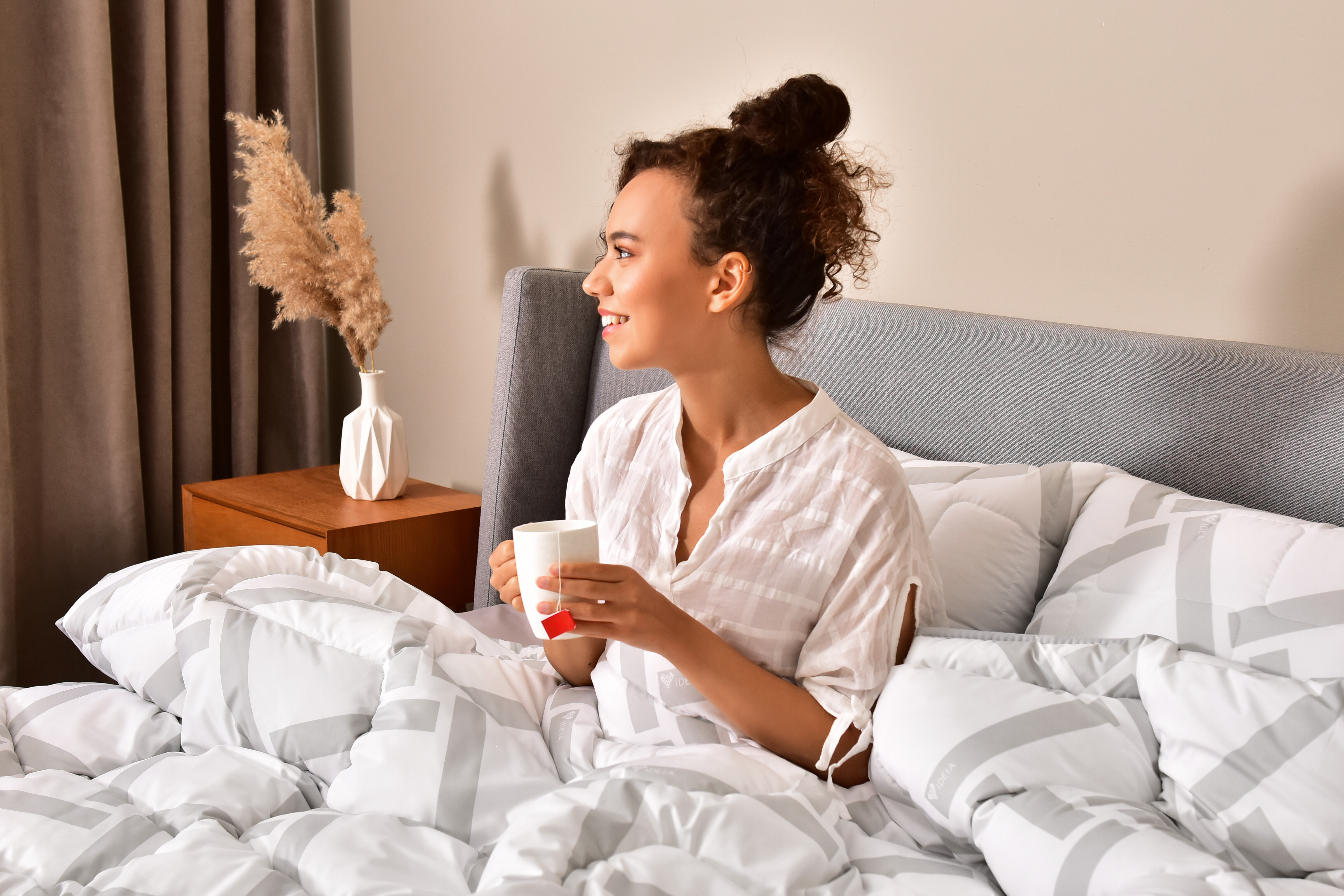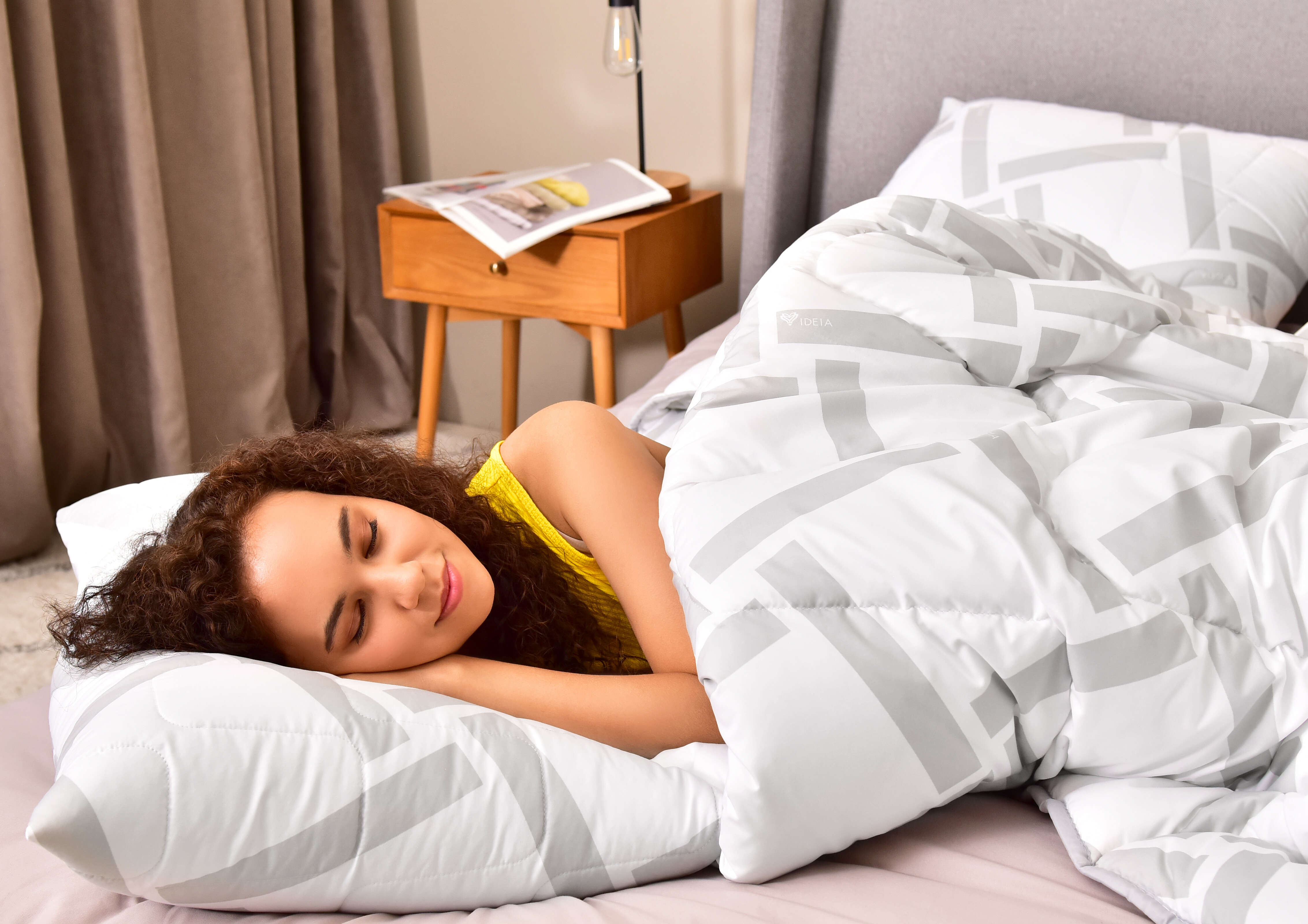 The bedroom is not just a place for sleeping. It is a personal space that should promote rest and recovery. The aesthetics of the bedroom play a key role in creating a cozy and relaxing atmosphere, which directly affects the quality of sleep.
The bedroom is not just a place for sleeping. It is a personal space that should promote rest and recovery. The aesthetics of the bedroom play a key role in creating a cozy and relaxing atmosphere, which directly affects the quality of sleep.
An aesthetically pleasing bedroom influences emotional well-being and the ability to relax. A pleasant environment helps reduce stress levels and improve mood. All of this contributes to falling asleep quickly and achieving a deeper, more restful sleep.
Factors Influencing Comfortable Sleep
Several key aspects should be considered when designing a bedroom. The main factors include color palette, furniture and space organization, lighting, and textiles.
Color Palette
Soft, Calm Colors: Choosing soft, calming colors such as pastels, blue, green, and gray helps create a relaxing atmosphere.
Bright and Saturated Colors: These can stimulate the brain and hinder relaxation. It's better to use them as accents.
Furniture and Space Organization
Comfortable Bed: The bed should be comfortable and match your preferences in terms of firmness. It's important for the furniture to be not only beautiful but also functional to ensure maximum comfort.
Minimalist Design: An overcrowded space can cause anxiety. A minimalist design promotes a sense of calm and order.
Lighting
Warm Lighting: Using lamps with warm light creates a cozy atmosphere. Adjustable lighting allows you to adapt the light according to the time of day and your needs.
Good Curtains or Blinds: These help control the level of light in the bedroom, which is especially important for those who struggle to rest due to strong outdoor lighting.
Textiles and Decor
Quality Bed Linens: Provide pleasant tactile sensations and comfortable sleep.
Additional Textile Elements: Such as throws and decorative pillows, add coziness and allow you to adapt the bedroom to your style.
Decorative Elements: Paintings, photographs, and other decorative items help create a personal space that reflects your individuality.
The Role of Textiles in Bedroom Design
 Textiles play a key role in creating comfort and aesthetics in the bedroom. Properly selected textile items not only enhance the interior but also form a comfortable atmosphere necessary for complete rest.
Textiles play a key role in creating comfort and aesthetics in the bedroom. Properly selected textile items not only enhance the interior but also form a comfortable atmosphere necessary for complete rest.
Bed Linens
Bed linens are the central element of textiles in the bedroom. They not only provide a comfortable sleep but also set the tone for the entire interior.
- Materials: Cotton, linen, satin, bamboo – all these materials have unique properties. Cotton and linen provide good ventilation, satin adds a glossy and luxurious look, while bamboo has antibacterial properties.
- Color and Patterns: Bed linens can be plain or adorned with various patterns. The choice depends on the overall style of the room. Calm pastel tones promote relaxation, while bright colors and bold patterns can add energy and expressiveness.
Blankets and Throws
Blankets and throws add warmth and coziness to the bedroom. They can be used both for practical purposes and as decorative elements.
- Materials: Wool, microfiber, acrylic, and cotton – each of these materials has its advantages. Wool retains heat well, microfiber and acrylic are easy to care for, and cotton is suitable for warmer months.
- Design: Blankets and throws can be plain or with various patterns. A beautiful throw draped over the bed adds coziness and completeness to the interior.
Sleeping and Decorative Pillows
Pillows play an important role not only in ensuring comfort during sleep but also in decorating the bedroom.
- Materials: Fabrics and fillers can be natural or synthetic. Natural materials provide good support and ventilation, while synthetic ones are often hypoallergenic and easy to care for.
- Decorative Pillows: These elements add color and texture to the bedroom. They can be changed according to the season or mood, thus updating the overall look of the room.
Curtains and Drapes
Curtains and drapes perform several functions. They control lighting, ensure privacy, and decorate the bedroom.
- Materials: Cotton, linen, silk, polyester – the choice of material depends on the style of the room and the desired level of dimming. Thick curtains block light and noise, while light drapes give the room an airy feel.
- Design: Curtains can be plain or patterned, matching the other textiles in the room. Beautiful drapes highlight the style of the interior and make it complete.
Rugs and Carpets
Rugs and carpets add warmth and comfort underfoot and are also an important decorative element.
- Materials: Wool, cotton, synthetic fibers – each material has its advantages. Woolen rugs are warm and durable, cotton ones are soft and natural, and synthetic ones are practical and easy to care for.
- Design: Carpets can be plain, patterned, or with geometric designs. The choice depends on the style of the room and the preferences of the owners.
Tips for Choosing Bedroom Textiles
Color Scheme
Choose textiles that harmonize with the main colors of the room. Calm tones promote relaxation, while bright accents add energy.
Quality of Materials
Give preference to high-quality materials that ensure comfort, safety, and durability of home textiles in your bedroom.
Seasonal Changes
Change textiles according to the season. Light fabrics and bright colors are suitable for summer, while dense and warm ones are ideal for winter.
Combining Patterns and Textures
Combine different patterns and textures to create an interesting and harmonious interior.
Care for Textiles
Choose materials that are easy to wash and quick to dry to maintain cleanliness and freshness in the bedroom.
Textiles play a key role in bedroom design, influencing its aesthetic appearance and functionality. Properly selected bed linens, blankets, pillows, curtains, and rugs create a cozy and comfortable atmosphere conducive to quality rest and sleep. By investing a little time and effort in choosing the right textiles, you can transform your bedroom into a place where it is pleasant to be and easy to relax.
Read about the safety of home textiles HERE.
